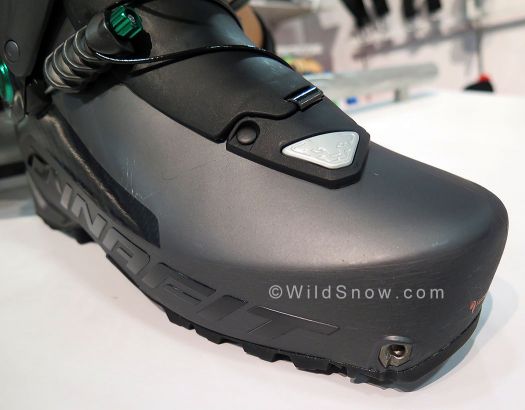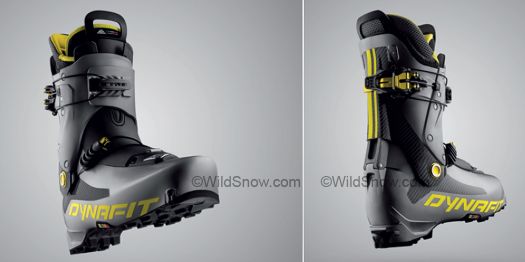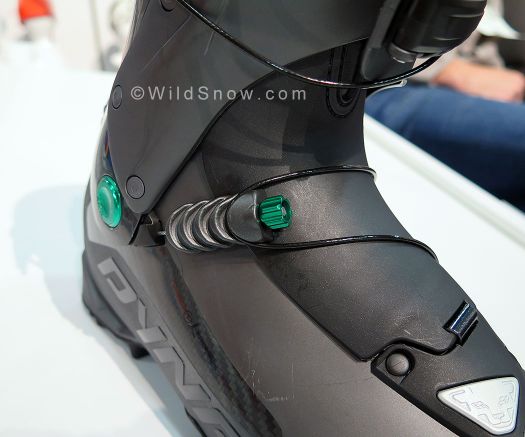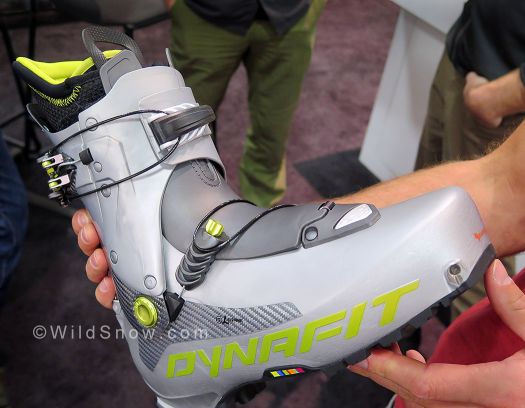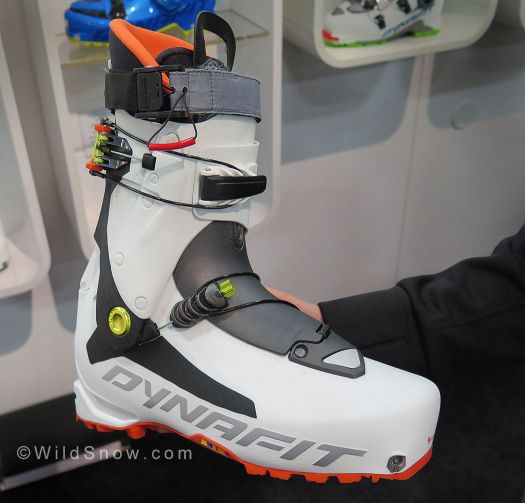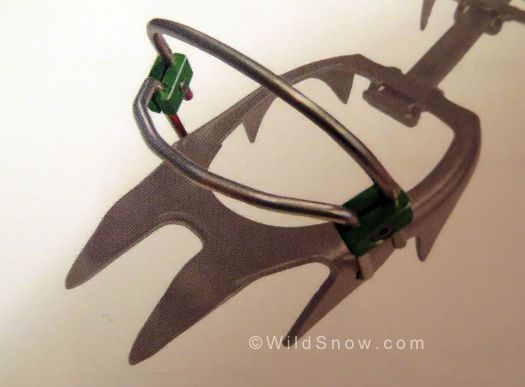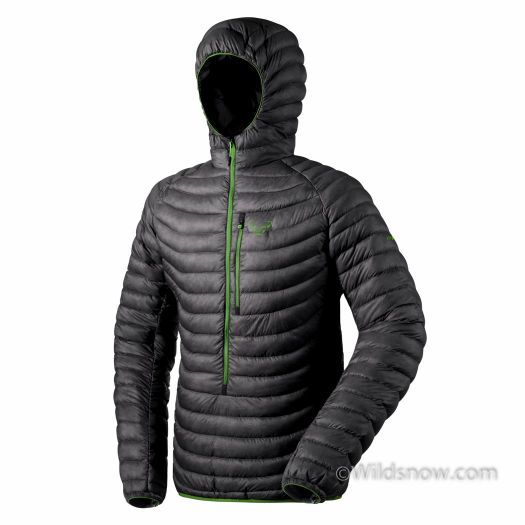Well well, the only way Dynafit could keep me quiet about this years tour-de-force of the Snow Leopard’s ski touring gear was to lock me up on a Greek airplane where internet access is not even a concept. But I’m finally here with Louie in Greece at Dynafit’s annual press event, coinciding with the OR show in Utah (where Lisa is holding up the WildSnow flag along with guest bloggers Rachel and Coop).
Dynafit appears to have circled their wagons, while at the same time leading a charging foray into the wilderness of ski gear innovation. Business 101 when you’re a leader being chased? Best example: Check out the absolutely fascinating TLT-7 boot. And wait, there is more…and…yes Virginia we are going skiing in Greece.
Press release edited and condensed:
Reduced to the bare necessities: That’s what the footwear developers at DYNAFIT are saying about the introduction of the new TLT 7 ski touring boot. New TLT 7 Performance weighs a mere 1,010 grams. Plus, it “moves” more efficiently with its new toe design called the “Speed Nose” and with the toe fittings set back for a more ergonomic rearward pivot. Not only that, the boot allows users to adjust, open and close it with a single buckle – thus saving time and handling.The TLT7 ski touring boot, available for the 2016-17 winter season, is the future of serious ski mountaineering. Aside from its lack of weight, developers emphasized more efficient handling. The re-engineered toes of the boot give it exemplary agility and maneuverability. The short lip without any sort of ski boot projection enables the pivot point to be set back to the pin binding attachment point: That significantly improves the ability to move comfortably on the ascent. (WildSnow comment, it will be interesting to see what happens with crampons, as we expect spikes that utilize the tech fittings a the toe instead of needed a classic welt-ledge for attachment.)
Open. Close, Walk, Ski: The Ultra Lock 3.0 Closure System combines all needed adjustments into one buckle. The system allow users with one lever to open and close the boot, as well as change between walk and ski modes. That saves you weight, handling, time and parts that can wear out.
Lastly, the boot is impressive looking with its simplicity. A trimmed back design doesn’t, however, just mean a sleek appearance. It also cuts back on exposed closures and components to avoid snagging, catching or undesired adjustments while moving. At the same time, fewer frills mean lower weight and less frictional resistance. When it comes to downhill performance, the use of a so-called Lambda Frame results in a more rugged shell and higher shaft strength. Fiberglass is used to reinforce areas put under more stress, while areas that need less have fewer reinforcements and therefore offer more flexibility. The boot will come with the new DYNAFIT Masterstep Insert that enables easier entry. The new insert allows maximum loads that can occur with Freeride bindings when they are set to a maximum DIN release value of Z16.
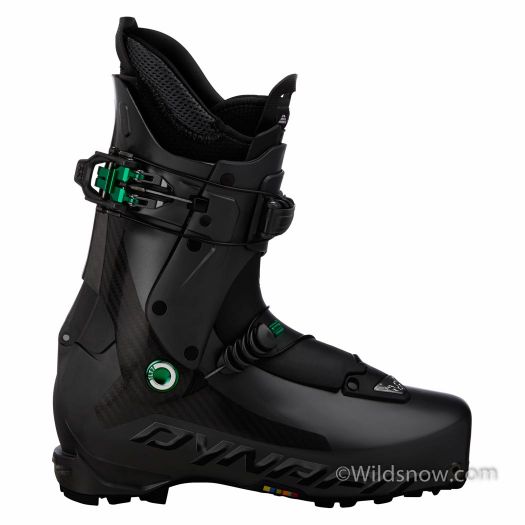
The Carbonio Boot, a mean, black, carbon infused version of the TLT 7. Only available in Select Retailers.
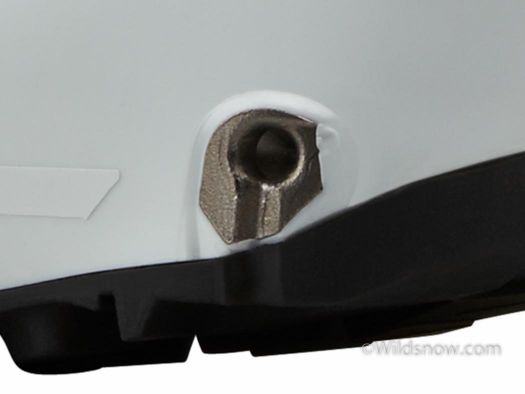
The “Masterstep” is an evolution of the front Dynafit tech insert. It uses a raised steel ridge to guide the boot into the binding. It’s similar to the inserts currently used in Scarpa and Dynafit boots, but is more pronounced. Reportedly it makes stepping into Dynafit bindings much easier.
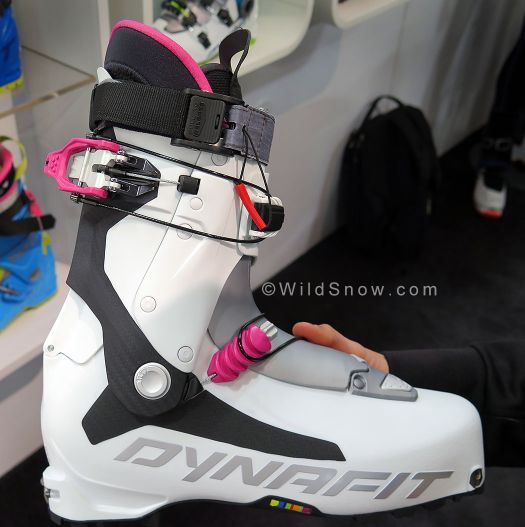
For the ladies, TLT7 Expedition, shell Grilamid, cuff Grilamid and carbon. Stated weight, 999g in size 27.5. Available for women in sizes 22.5 to 27.5.
Call it the charge of the carbon brigade. I’ve been waiting for a company to use more of the main diamond ingredient in their products as well as their marketing. Carbon is just such brilliant stuff, whether black or shiny. So, what Dynafit did is they expanded their “Carbonio” product line to more than a ski.
Carbonio Press Release, edited and condensed:
With the Carbonio ski touring line, ski touring brand DYNAFIT is breaking new ground. Our development approach: to demonstrate the potential in the ski touring segment using premium materials, technical processes and unusual concepts. The line will outfit ski touring athletes from head to toe and will be available as of September 2016 at select specialty retailers.
1.Carbonio Premium — insulated jacket for colder days
One slick lightweight piece: Dynafit offers a surprising package for the coming winter season with a 260-gram-light insulated jacket that promises superior warmth with its extraordinary material mix. Carbon particles added to the synthetic fiberfill combined with a Pertex Quantum® outer shell and a three-quarter zip make for a truly special style.
Instead of a classic down fill, DYNAFIT fabric developers opted for a high-tech synthetic fill. Why? Because the fibers blended with carbon particles reflect the body’s own heat and create efficient insulation. The warmth to weight is thus significantly improved compared to other insulated jackets of the same type when it comes to weight and thickness. In addition, the synthetic fill offers easier care and is also more durable and longer lasting than down – a strong benefit with intensive use in the mountains.
A further reason for the use of synthetic fibers is breathability. The highest possible breathability and permeability in an outer shell is better achieved in combination with synthetic fibers than with a down fill. In other words: A synthetic fill promises a very breathable jacket.
At 260 grams, DYNAFIT has achieved the lightness of being with the Carbonio insulated jacket. To reach that weight, fabric developers focused on trimming back necessary materials to the bare minimum. The highly water-resistant Pertex Quantum® outer shell is the most premium and lightest nylon available on the market today. It is also used as the lining fabric in the Carbonio jacket. The jacket’s highly water-resistant zipper stops at the navel. This serves to shave weight and also cuts down on too many overlapping zippers in a layering system. In addition, the elastic draw cords were trimmed down and ultralight nylon was used between the layers.
The chest pocket was intentionally kept small and designed only to hold your most important personal items to not add any additional weight to the lightweight piece. This insulating jacket can also be stowed in its own hood and can be stashed in the smallest corner of your pack during the ascent.
2. DYNAFIT CARBONIO 88 SKI: Downhill performance
The new Carbonio 88 ski model from DYNAFIT weighs barely over a kilo and offers the highest downhill performance. It will be available as of September 2016 at select specialty retail partners. This model with a waist of 88mm is made just for backcountry ski touring for athletic skiers: Its carbon construction lends high rigidity and responsiveness. The Carbonio 88 model features premium materials and an unusual design, and pulls from our many years of development expertise.
(Wildsnow note: Carbonio class of Dynafit skis begins retail this year with their 74 mm version, this 88 mm version will be available for 2016-2017. Louie skied on the 88 for two days here at Dynafit press event, one day with quite a bit of vertical on exceptionally varied snow. He’s working on a report.)
With an 88mm waist, the ski weighs barely over a kilo at a length of 167mm: The ratio of surface area to weight speaks for itself. The dimensions and reduced weight guarantee efficiency on the ascent and outstanding downhill performance. Micro sidewall construction the full length of the ski ensures efficient and direct power transmission to the edges. The use of a reinforcing carbon layer across the entire width of the ski increases rigidity and decreases chatter. This gives the ski stability and crucially precise edging on steep terrain and in icy conditions. Proven 3D carbon construction works overtime to absorb energy from impacts and thus optimizes ski handling.
With its Dual Radius Construction – a combination of a large front radius and a small rear radius – the ski has a neutral turn initiation and exit, also saving energy on wide, sweeping turns. In addition, the model has a light rocker construction at the shovel and tail, especially designed to reduce the self-steering effect on difficult terrain and increase the fun and ease in carving turns.
This model is available in four lengths (158/167/176/184).
3. TLT7 CARBONIO: Next Generation Ski Touring — 990 grams
This special edition of the TLT7 ski touring boot weighs just 990 grams. (WildSnow: According to the Dynafit folks here in Greece, Carbonio trims grams by using more carbon in the cuff, which on the Performance models of TLT 6&7 still has some regular plastic. Also, the Carbonio boot is black. Black is back? We’ll ski or at least carpet test the TLT7 tomorrow and file more impressions. Other than the Carbonio being lighter and a different color, it has all the other features of TLT7 described above. )
The Carbonio color and carbon themed gear from Dynafit also includes a helmet, ski pole and backpack. All look nice and combine various degrees of innovation with their black and green colorway.
After checking out the TLT7 versions, I’m at a bit of a loss to pick the most disruptive features, but the lack of a power strap and including of a cable actuated “one motion” buckle system is probably key. That despite the overall rad appearance of the boot with it’s bullet-head toe box. Or? A few years ago I did a proof-of-concept blog post detailing how we through-bolted the tech fitting to the heel of a ski boot. It took Dynafit a while to catch on to the hint, but the TLT7 heel fitting is molded into the shell and attached with a screw from the inside of the boot. It’s so strong you can use a Beast binding without the fiddly adapter we’ve been fiddling with now for a couple of years. That is one strong tech fitting.
That’s all for now, we have clear skies and snow here in Samarina, Greece. I just ate a literal ton of sheep, lamb, goat and pork. I’m going to bed. You know how it is in Italy, when you have a set number of courses in a meal? Nice to have caloric certainty. Different here. Apparently, if you keep sitting at a table in Greece, and clean your plate, they just keep bringing food. I wish I’d read that in the tourist guide, would have saved me a lot of digestion pills. I just pray that tomorrow I can ski instead of crawl after the feed we escaped only moments ago.
WildSnow.com publisher emeritus and founder Lou (Louis Dawson) has a 50+ years career in climbing, backcountry skiing and ski mountaineering. He was the first person in history to ski down all 54 Colorado 14,000-foot peaks, has authored numerous books about about backcountry skiing, and has skied from the summit of Denali in Alaska, North America’s highest mountain.

